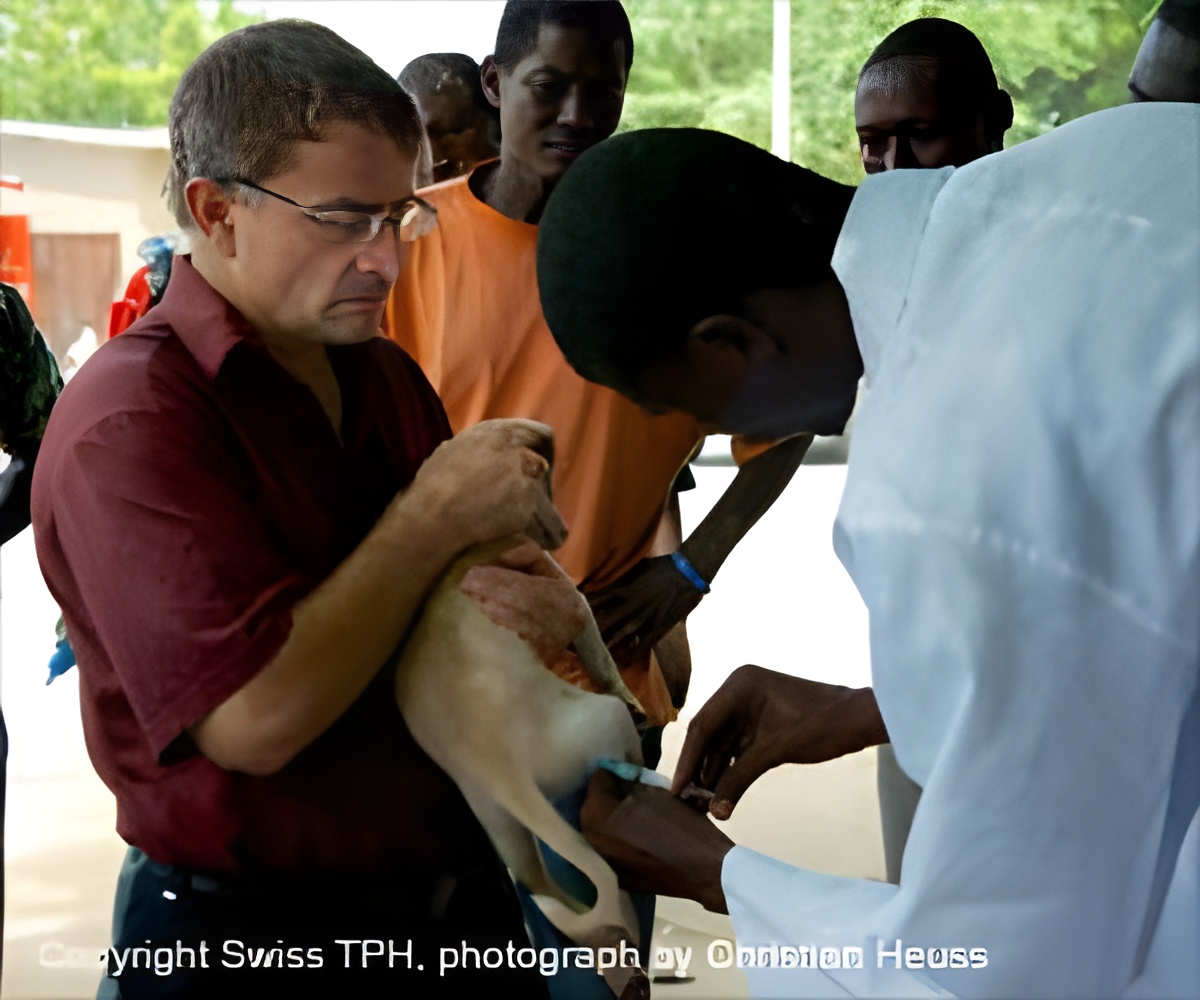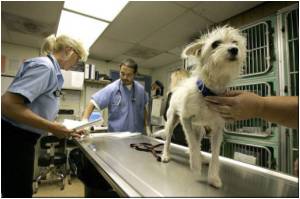
‘Eliminating dog rabies by 2030 can help prevent people dying from dog-transmitted rabies.’
Tweet it Now
"If you want to prevent humans from dying from rabies in Africa and Asia, you need to eliminate dog rabies," said Jakob Zinsstag from the Swiss Tropical and Public Health Institute (Swiss TPH), first author and principal investigator of a study in Science Translational Medicine. Swiss TPH, together with collaborators in Europe and in Africa, demonstrated the proof-of-concept that elimination of rabies is feasible. "We have shown that African teams in one of the poorest countries can eliminate human rabies through mass vaccination of dogs. What is needed next is additional funding and a concerted political will," said Zinsstag, an epidemiologist and veterinary public health expert.
The investigation was carried out in N'Djamena, the capital of Chad where 1.1 million people live alongside some 30,000 dogs. In 2012 and 2013, 20,000 dogs were vaccinated each year against rabies. Hence, more than 65% of the city's estimated dog population participated in the intervention, "an excellent coverage rate," said Zinsstag. "We mobilised the neighbourhood chiefs and they in turn mobilised the people and their dogs."
A model African-European collaboration
Swiss TPH is a world-leading institute in the field of human and animal health - increasingly known as "One Health" - and maintains a productive collaboration with Chad dating back to the 1990s. Swiss TPH collaborated with a public-private partnership in Chad, namely the Centre de Support en Santé Internationale (CSSI) and the Institut de recherche en élevage pour le développement (IRED). An additional player was the Laboratoire Central Vétérinaire (LCV) in Bamako, Mali.
Advertisement
"The mathematical modelling shows that the reproductive number, that is the number of secondary infections for one rabies-infected dog, fell under one, hence transmission is interrupted, and a molecular analysis shows that the circulating strains disappear," said Zinsstag and Nakul Chitnis, a co-investigator at Swiss TPH.
Advertisement
The study is one of the first research projects to apply a rigorous phylodynamic method to dog rabies, and hence, it expands upon the normative phylogenetics (i.e. assessing the genetic relatedness of virus strains) with the dynamics of transmission over time. This made it possible to calculate the reproductive number of rabies among the dogs after the first mass dog vaccination in 2012.
"Dog rabies was likely re-introduced through the import of dogs by humans from outside N'Djamena after the rabies elimination had been achieved," Zinsstag explains.
The phylogenetic analysis supports this finding, since the sequence of nucleoprotein of the new viruses showed a different genetic structure. "The molecular method ascertained the results put forth by the mathematical model through an independent approach," said Zinsstag. "Therefore eliminating rabies is not a technical problem, but a matter of political will and sufficient financial resources."
The Swiss TPH study was financially supported by the UBS Optimus Foundation in Switzerland (vaccine, epidemiological field work and laboratory investigations). The Chadian government covered other costs (logistics and personnel).
Towards elimination of rabies in Central and West Africa
Eliminating dog mediated human rabies by 2030 is part of the Sustainable Development Goals (SDGs). "It will be a formidable challenge to reach this SDG goal by then, but we can prevent people from dying from dog-transmitted rabies," said Zinsstag.
"Our study provides an important proof-of-concept for the Global Alliance for Rabies Control (GARC) and the Pan-african Rabies Control Network (PARACON) that rabies elimination in Africa indeed can be achieved."
As a next step, Swiss TPH and its partners plan to extend mass dog vaccination against rabies across Chad. "We have calculated that with 28 million euros, it would be possible to eliminate rabies throughout the country. However, an important challenge is migration: once Chad is free from rabies, the disease might be re-imported from neighbouring countries such as Cameroon and Sudan. We therefore need a concerted Pan Central and West African approach, led by the Economic Unity of West African States ECOWAS and the African Union.
This would bring along the additional benefit of promoting peace through cooperation." Zinsstag estimates that in order to free Central and West Africa from rabies, the costs would amount to around 1 billion euro over a 20-year period.
Source-Eurekalert









